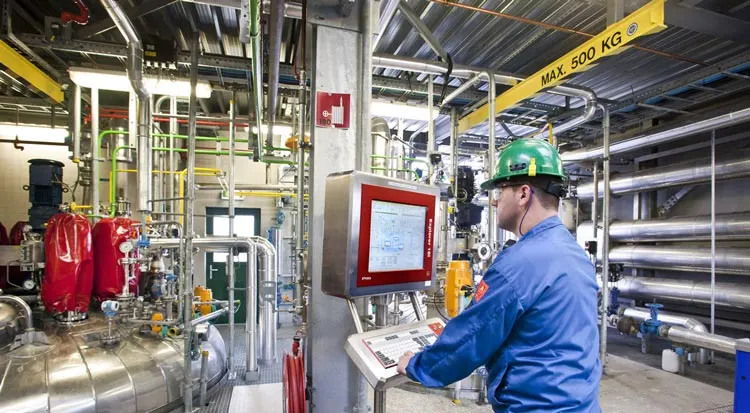Top 3 Benefits of Human Resource Management System
Human Resource is truly the heart & the soul of every organization, a fact that has been unanimously endorsed by all.
Sir Richard Charles Nicholas Branson, Entrepreneur and Founder of Virgin Group which controls more than 400 companies once said "No matter your industry, your employees are your company’s real competitive advantage. They’re the ones making the magic happen – so long as their needs are being met."
Hence managing this vital component of business namely its 'Workforce' is a very important activity and it is absolutely essential that the Human Resource department of an organization functions at optimum efficiency to ensure that its workforce delivers to the best of its ability in a positive working environment.
Human Resource Management : A Continuous-Complex Task
However human resource management is not a simple task but is a never-ending list of responsibilities; starting from recruiting the right resource for the right task, providing them with adequate training and skills based on the nature of job, managing their attendance on a daily basis, processing their payroll sans errors, performing appraisal periodically as per the company’s policy, handling the relieving formalities, and so on to just name a few. Apart from this, organizing company events, devising work place policies, addressing employees grievances to ensuring a positive work environment also come under the purview of the HR department. The Effectiveness with which the HR department juggles between these crucial responsibilities is the factor that decides the success of the organization in the long term.
Mr. Vinay Couto, Head of the People and Organization Strategy practice PricewaterhouseCoopers, says "The first thing HR should do is figure out how to reduce administration. Put it in a box and automate the heck out of it"
The clear indication is towards automation of the HR management activities. Many organizations have moved to automation of HR processes to enhance efficiency and reduce costs, as indicated here:
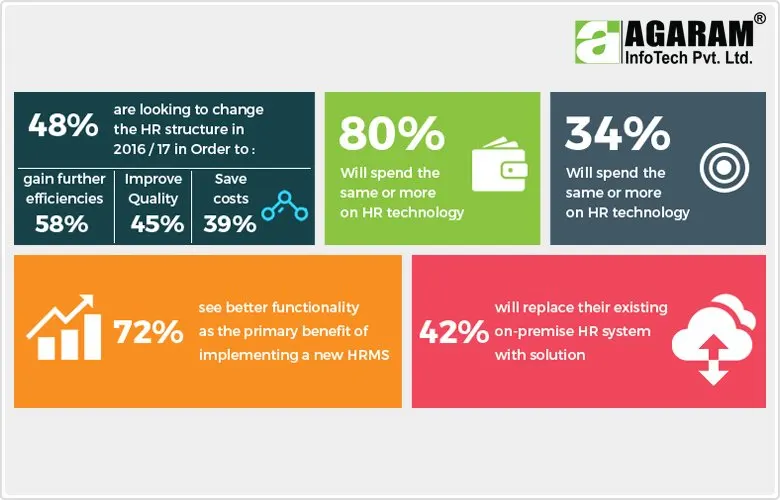
To analyze more about this growing trend of implementing a HRMS, let us discuss about the benefits of automating the Human Resource Management Activities:
Process made Simple, Easy & Accurate
In a paper-based working environment, the HR professionals would be held up in activities like manually preparing the document, dispatching them, verifying the signed document, filing it and so on. Automation of the system frees them from these hassles by enabling them to capture, store, secure and access information in a digital format. The extended tasks of employee onboarding process like providing them access rights, device requests, etc., can be done automatically using an easy checklist that can be verified by the human resource management staff, the new employee, and the system support group. The system also eliminates the constant need to open up documents and folders to get the required statistics, everything is exhaustively provided in the form of reports and metrics.
Apart from making the process easy and streamlined and efficient HRMS makes the process accurate. For example, Employee attendance tracking performed through an integrated Bio-metric system ensures that the working hours are captured with no scope for error. Managing multiple shifts, Over Time, Permissions can be done with accuracy. One of the most cumbersome job that is made simple by HRMS is Payroll Processing. This time consuming activity that has to performed with precision every month for each employee of the organization, can be effectively automated for easy execution & absolute accuracy. The accurate attendance details, employee benefits & deductions maintained in the system all can be easily fetched and payroll of thousands of employees can be processed in minutes by just a click of a button.
Dashboard Metrics - For Analysis & Strategy
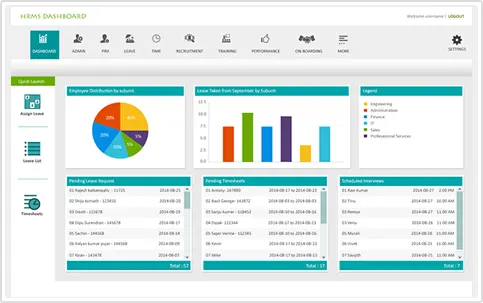
Business Metrics offer a clear insight in to the performance of your organization. Metrics related to your workforce helps you evaluate the effectiveness of your people management strategy. Dashboard offers figures and metrics depending on the user, for example – A manager views a leaderboard that displays overall statistics like No. of work hrs. clocked by their department personnel, a bar graph depicting the leave trends of his reportees, employee turnover rates, etc. Everything is available in a nutshell to assimilate. This helps them for Continuous monitoring, review and modification of management strategy which is an absolute requirement in human resource management.
The pulse of the organization can be tracked by these workforce metrics. For example when figures indicate high turnover rates in Production department the HR managers & concerned department heads will become aware of this risk and would initiate required action to retain employees. Thus the metrics offered by an efficient HRMS enables better Growth Strategy.
Improved Employee Engagement
The great value that human resources add to a business has been an acknowledged fact, reinstated by stalwarts of many industries.
Mr. Vineet Nayar, Former Chief Executive Officer of HCL Technologies & author of the path breaking book "Employees First, Customers Second says "If you do not put the employee first – if the business of management and managers is not to put employee first – there is no way you can get the customer first"
This unconventional management approach transformed HCL Technologies in to one of the fastest growing and profitable global IT services companies.
Employee engagement can be best described as the workplace approach that ensures that employees have a feeling of belonging to the organization. It is absolutely vital to engage your employees so that they are professionally happy and this ensures that they perform to the best of their abilities, as clearly indicated below:
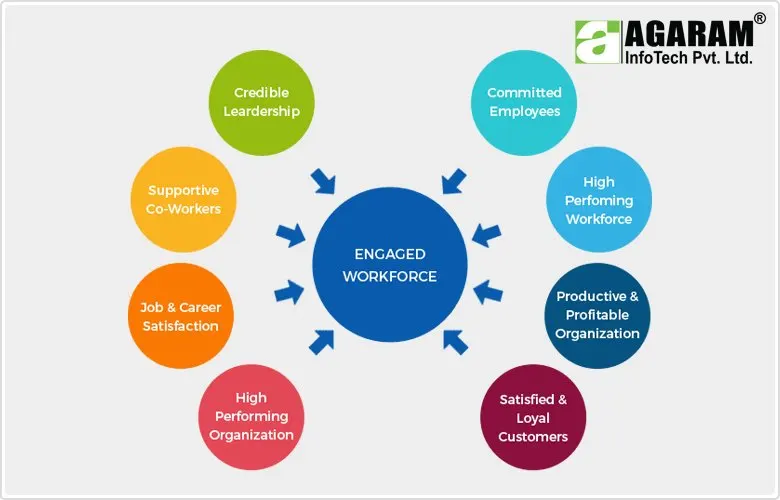
Though employee engagement is a responsibility that rests with every employee higher in the leadership ladder, Human resource department has a major role in it. HR professionals should create an environment of transparency and amiable discussions between managers / leaders and their reportees through effective employee engagement forums which discusses on topic such as key organizational metrics, Customer interaction, on-field issues, company policies and systems. HR professionals can also acquire knowledge about how employees feel about their work, the organization, and its leadership through engaging employee surveys or focus groups. Employees feel valued when the organization considers their views and opinions to devise strategy to evolve and improve. An efficient HRMS achieves this through Organization Social Networking which offers employees a platform to connect professionally. This leads to fruitful interactions and brainstorming amongst employees across departments and verticals. Apart from these, knowledge/ experience sharing forums/portals HR also have to ensure that outstanding performances are recognized and appreciated. Performance Management System or Appraisal system which is an integral part of HRMS helps to accomplish this through schedule periodic meetings between employees and their supervisors and through rewards / awards programs. The system would also offer metrics related to employee engagement at regular period to evaluate the effectiveness of the measures.
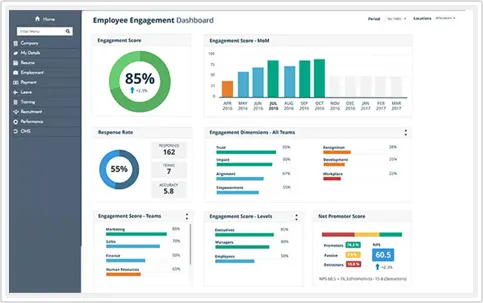
Employee engagement is an absolute requirement for the progress of a concern, for only happy and satisfied employees can contribute positively to the growth of an organization. However employee engagement requires considerable planning, effort and meticulous execution from the HR department and an automated HRMS offers all these and more.
How to choose the right HRMS for your Organization?
Having clearly analyzed Benefits of Human Resource Management System and the value it adds to your organization, selection of the right system would be the next concern. It is necessary to weigh the different softwares based on their Functionality, the Security especially for the vital Employee details, User Experience which both is easy and gratifying, Customer Support offered, Scalability when it comes to accommodating for the growing number of workforce and last but not the least the Cost of the software which would determine the ROI. Evaluate the softwares on these key points to ensure the selection of right HRMS product for your organization.


 Dormitory-Management-System
Dormitory-Management-System


